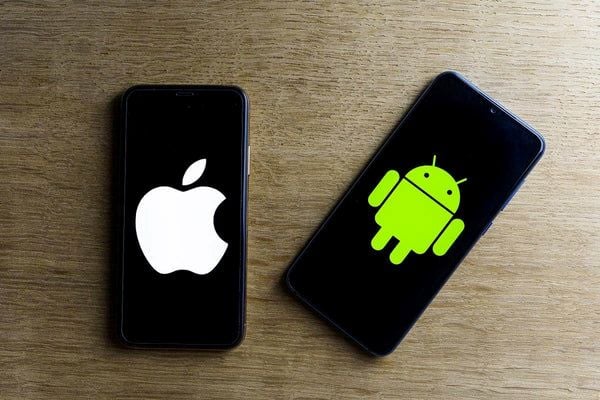When it comes to smartphones in Malaysia, it’s usually a showdown between two heavyweights: Android vs iOS. Both platforms have their die-hard fans and offer unique features that make using your phone a whole different experience. With both Android and iOS constantly upgrading with fresh tech and new gadgets, picking the right one for you has never been more important.
So, how do you decide which one fits your lifestyle better? Don’t worry—we’ve got you covered. This guide breaks down everything you need to know about Android vs iOS, highlighting the benefits that really matter to Malaysians like you.

Editor
Mae An NG chevron_right
Table of Contents
The Key Differences of Android vs iOS
|
Feature |
Android |
iOS |
|
Customization |
Highly customizable, it allows deep personalization through widgets, launchers, and ROMs. |
Limited customization, focuses on a clean, consistent interface. |
|
Device Variety |
Wide range of devices from budget to flagship models (Samsung, OnePlus, Google). |
Limited to Apple devices (iPhone, iPad, MacBook, etc.). |
|
User Interface |
Flexible and customizable UI. |
Consistent, smooth, and simple interface with intuitive design. |
|
Software Updates |
Varies by manufacturer; updates may be slower for some devices. |
Regular and long-term updates directly from Apple for at least 5 years. |
|
App Quality & Variety |
Google Play Store has a wide variety of apps; more freedom but less control over quality. |
Apple App Store offers a curated experience with more stringent app quality control. |
|
Integration with Other Devices |
Good integration with Google services (Gmail, Google Drive, etc.) and other Android devices. |
Seamless integration with the Apple ecosystem (iPhone, iPad, Apple Watch, Mac, etc.). |
|
Performance |
High-end Android devices (e.g., Samsung Galaxy S25, OnePlus 12) offer top-tier performance. |
The iPhone's performance is optimized with the A-series chips, offering consistent speed. |
|
Camera Quality |
High-quality cameras with strong software support (e.g., Samsung Galaxy S25, Pixel 9). |
Consistently strong camera performance with great software enhancements (e.g., iPhone 16 Pro Max). |
|
Battery Life |
Generally longer-lasting with larger batteries in most models (e.g., Samsung Galaxy S25). |
Optimized battery performance, lasts a full day in most scenarios (iPhone 16). |
|
Security |
Strong security features with Google Play Protect, but more open to third-party apps. |
Stronger security with frequent updates and a closed system that prevents malicious apps. |
|
Price Range |
Offers budget, mid-range, and premium options for different budgets. |
Premium pricing, with a few lower-cost models like the iPhone SE. |
|
Best For |
Users who value customization, variety in devices, and value for money. |
Users who value simplicity, long-term support, and integration with other Apple devices. |

Android gives you the freedom to customise and make your phone truly yours — from widgets to launchers, the sky’s the limit. On the other hand, iOS keeps things smooth, secure, and super user-friendly — perfect for those who just want things to work.
So which one suits you best? Read more to help you decide!
Android’s Open-Source Advantage in Customization
If you love to make your phone truly yours, Android is the champ. Thanks to its open-source nature, you can change almost everything, from your home screen layout to your default apps. Want cool widgets, fresh launchers, or even to flash custom ROMs if you’re adventurous? Android’s got your back.
Here in Malaysia, popular Android phones like the Samsung Galaxy S25, OnePlus 12, and Google Pixel 9 run on Android 14, giving you heaps of control to tweak your device just the way you like it. With third-party apps for system tweaks and optimisations, the customisation options are endless!
iOS and the Apple Ecosystem Seamless Integration
If you own multiple Apple gadgets — maybe an iPhone 16, an iPad M4, an Apple Watch Series 10, or a MacBook Pro — iOS offers a beautifully smooth, integrated experience. The latest iOS 18.5 makes it effortless to switch between devices with features like Handoff, AirDrop, and Continuity.
Imagine starting an email on your iPhone and picking it right up on your MacBook without skipping a beat. For those who love that smooth, no-hassle experience across their Apple devices, iOS is pure convenience.
iOS vs Android App Store and Software Updates
When it comes to mobile apps, Apple’s App Store is like a gated community. Super strict but super safe. Every app goes through tight checks, so you’re less likely to run into buggy or dodgy apps. With the latest iPhones, like the iPhone 16 Pro Max, you’ll enjoy smooth and speedy app performance that feels like it’s built right into the phone.
On the other hand, Android users get more freedom with the Google Play Store. It’s a lot more open, which offers more variety, especially useful if you like trying out new or niche apps. Just keep an eye out for the occasional low-quality ones. Luckily, Google Play Protect is always working in the background to keep your phone secure.
Now, let’s talk updates. This is where iPhones really shine. Apple’s legendary for long-term support. You can expect the iPhone 16 to get updates for at least 7 years! It has more features, better security, and a longer lifespan for your phone. Android brands like Samsung (hello Galaxy S25) and OnePlus (check out the OnePlus 13) usually offer around 3 years of updates, which is still solid, just not quite as long.
iOS Leads the Charge in Performance and Speed
When it comes to raw power, Apple still has the upper hand. The latest iPhone model is expected to be powered by the A18 Pro chip, designed in-house by Apple to work seamlessly with iOS. What does that mean for you? Super smooth gaming, effortless multitasking, and lightning-fast performance all around.
But don’t count out Android flagships just yet. Top contenders like Samsung and Google are packing serious power too, with the latest Snapdragon 8 Gen 3 or Samsung’s own Exynos chip. These phones can easily handle heavy apps, high-end games, and all your daily tasks without breaking a sweat.
Sure, iPhones still tend to top the benchmark charts, but Android phones are catching up quickly. Whether you’re team iPhone or team Android, you’re in for a fast and fluid experience either way.
Camera Quality - A Close Race Between Android and iOS
Calling all photography enthusiasts in Malaysia – you’re truly spoiled for choice when it comes to smartphones with amazing cameras!
If you're an Apple fan, the iPhone 15 Pro doesn’t disappoint. It’s packed with a powerful triple-lens system, including a 48MP main sensor and a LiDAR scanner that shines for portrait shots and low-light photography. Whether you're capturing family gatherings or snapping aesthetic café shots, the iPhone delivers crisp, detailed results every time.
But Android users, don’t feel left out – there’s plenty to shout about too. The Samsung Galaxy S25 is a beast with its 200MP main camera, perfect for ultra-sharp, high-resolution photos. And if you’re all about smart tech, the Google Pixel 9 brings AI-powered computational photography that gives you stunning colors, dynamic range, and jaw-dropping clarity, even in tricky lighting.
At the end of the day, both iPhone and Android bring serious camera power to the table. It all depends on what features matter most to you, whether it's ProRAW, night mode, or AI photo editing. Either way, you’re in for a treat!
Battery Life - Which OS Does It Better?
Let’s face it, battery life matters, especially when you're always out and about in Malaysia’s hot weather, rushing between work, makan sessions, and traffic jams.
If you're a team iPhone, this is a solid pick. Apple’s known for its top-notch hardware and software optimization, so you can expect it to last a full day on a single charge. No power bank needed.
Prefer Android? Power users will love the latest Samsung phone with its massive 5000mAh battery — perfect for streaming, gaming, and social scrolling all day long. And if you’re always in a rush, the newest OnePlus phone might just be your lifesaver. It supports crazy-fast 100W charging, taking your phone from 0 to 100% in just 30 minutes. That’s quicker than your teh tarik session!
Android for Every Budget
Looking for a new phone without breaking your savings? Android is your best bet. Whether you’re eyeing a budget-friendly smartphone or going all out with the premium one, there’s something for every budget right here in Malaysia.
iPhones, on the other hand, tend to be pricier. Even the “affordable” iPhone 16e will cost you more than many entry-level Android models. So if you want more variety and wallet-friendly options, Android’s wide lineup gives you plenty of choices to suit your needs—and your budget.
Advantages and Disadvantages of Android vs iOS
|
Aspect |
Android |
iOS |
|
Advantages |
- Customizable UI and settings. |
- Seamless integration with other Apple devices. |
|
- Wide selection of devices at all price points. |
- Longer software support and regular updates. |
|
|
- More open ecosystem with flexibility for third-party apps. |
- Consistent, smooth performance and design. |
|
|
- Better value for money, especially in mid-range and budget phones. |
- High-level security and privacy. |
|
|
Disadvantages |
- Software updates can be inconsistent across devices. |
- Fewer customization options compared to Android. |
|
- Some apps may be less optimized or poorly built. |
- Limited variety of devices and price points. |
|
|
- Can have fragmented experience across different brands. |
- Expensive, especially flagship models. |
|
|
- Security can be less strict than iOS, allowing potentially risky apps. |
- Fewer options for users who prefer flexibility. |
Final Thoughts

(image from SUPCASE)
So, which OS should you pick? If you want full customization and more options for every budget, Android’s your best bet. But if you value smooth integration with other Apple devices, longer software support, and a snappy user experience, iOS could be worth the investment.
Whatever your pick, both systems have evolved to serve Malaysians well — it’s all about what fits your lifestyle and needs!
Take your time, explore the options, and pick the phone that fits your life, not the other way around.
